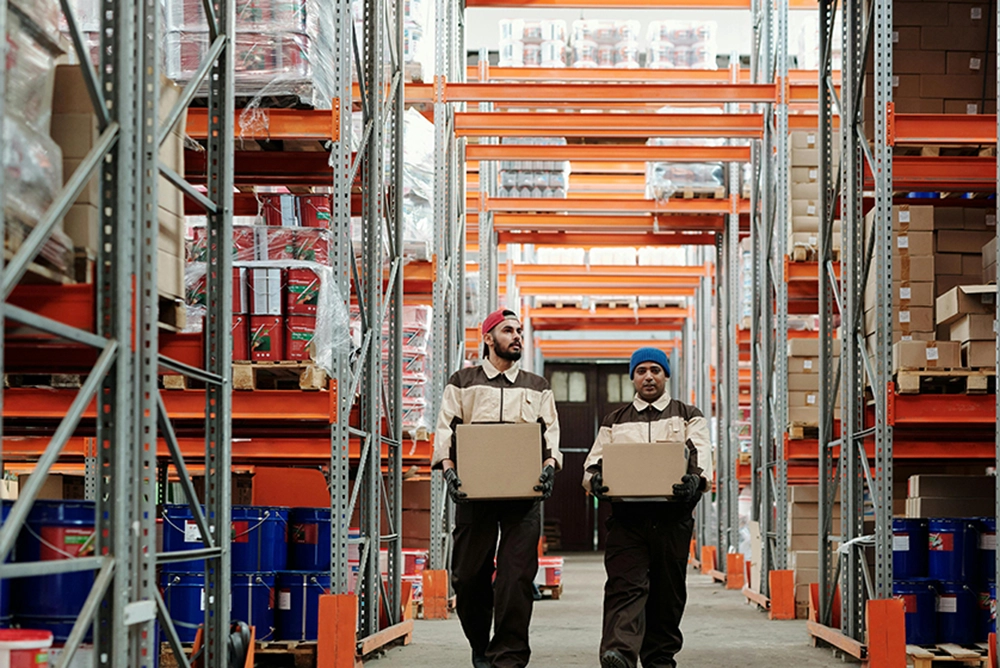Why Choosing the Right WMS Matters
A good WMS isn’t just about managing inventory, it’s about streamlining your entire operation. A warehouse management system or WMS is a digital platform that manages inventory, workflows, and labor. Over 83% of warehouses in the U.S. use a WMS.
Not all WMS platforms fit every warehouse. The wrong choice can slow things down instead of speeding them up. This is a guide to find the right WMS for your business.
Your system is only as good as the people using it. WMS and workforce management are connected. When warehouses pair the right tech with flexible, reliable warehouse temp staffing, they unlock real efficiency.
Step 1: Define Your Warehouse Needs and Goals
Know what problems you’re solving before you buy anything. Evaluate your warehouse size, product mix, and order volume. Identify your pain points: inaccurate inventory, slow picking, poor tracking, etc.
Decide what your top priorities are: speed, cost savings, automation, labor management, or all the above.
Pro Tip: Consider input from floor supervisors and pickers/packers when evaluating. They use the system daily and know the pitfalls.
During the evaluation or testing phase, use temporary warehouse workers to handle routine labor while your internal team focuses on WMS setup or training.
Step 2: Evaluate Key Features That Boost Efficiency
Not every WMS is created equal, look for tools that save both time and labor.
Core WMS Features to Look For:
- Real-time inventory tracking
- Barcode or RFID integration
- Picking path optimization
- Labor management dashboards
- Integration with shipping and ERP software
You may also consider the ROI of automation. With automation doing repetitive tasks there are fewer efforts, faster fulfillment, and lower labor costs. However the initial costs of automation can be hefty.
When a WMS streamlines repetitive tasks, you can scale your labor flexibly. For example, using a warehouse job app to staff warehouse shifts only when more workers are needed. This can be a useful tool during the busy season when trying to find pickers and packers to meet the increased demand.
Traditional temp agencies near you are too slow to give you this fast access. With Bacon workers can pick up warehouse shifts and be in your warehouse working by the next day.
Step 3: Test for Usability, Training, and Scalability
A WMS is only valuable if your team can actually use it easily and consistently.
Conduct pilot tests with a small team before a full rollout. Choose a system with an intuitive interface and easy onboarding.
Plan a structured training program for both permanent and temporary warehouse workers.
Use flex labor to bring in reliable temp labor during busy periods. This keeps operations smooth while your core team learns the new system.
Ensure your WMS can grow with you. More users, more SKUS, and integration with staffing for the future. A powerful WMS is useless if your people can’t use it confidently.
Step 4: Align Your WMS with Smart Staffing Strategies
Technology + flexible labor = unstoppable efficiency.
Even the best WMS can’t fill orders alone it still needs capable hands. Find the balance between automation and adaptability. Use data from your WMS to predict peak periods and proactively post shifts on Bacon to find warehouse workers.
Partnering with a staffing platform like Bacon optimizes your workforce. You can hire picking and packing workers quickly and efficiently. A WMS optimizes the workflow. Together they create an optimized and efficient warehouse.
Conclusion: The Right WMS + The Right People = Real Efficiency
Choosing the right WMS requires knowing your goals, evaluating features, testing usability and aligning staffing. Combining cutting edge tech with on-demand staffing is how modern warehouses stay competitive.
Looking to staff your WMS driven warehouse with reliable, rated workers? Use Bacon to find warehouse staff fast.







